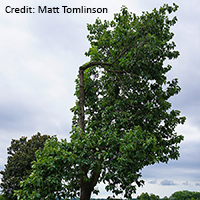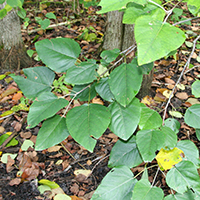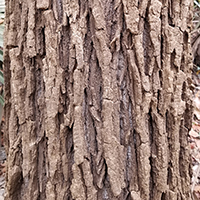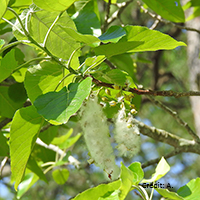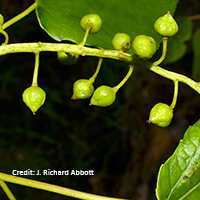What swamp cottonwood looks like
Size and shape
- Reaches 30 metres high.
Leaves
- Green and coarsely toothed.
- Rounded at the base with blunt tips (10 to 15 centimetres).
Bark
- Grey and coarsely furrowed.
Flowers
- Grow as catkins (5 to 10 centimetres).
- Male flowers are yellowish and female flowers are green.
- Bloom in mid-spring.
Fruit
- Seed capsules are brown when mature, smooth and oval (1 to 1.5 centimetres).
- Capsules split into 2 or 3 parts in late spring to early summer to release seeds embedded in tufts of hair, resembling cotton.
Where swamp cottonwood is found
Swamp cottonwood is very rare in Canada, known from a single location south of Sarnia.
What you need to know to grow swamp cottonwood
- Moisture: grows best in moist soils.
- Soil: grows best in clay or loam.
- Shade: grows best in full sun.
Benefits and uses of swamp cottonwood
Wildlife benefits
Swamp cottonwood seedlings and young trees provide browse for some species, such as rabbits and white-tailed deer. The bark is a food source for beavers and voles and the trees host many butterfly species, including viceroys.
Commercial uses
Swamp cottonwood wood can be used to produce:
- crates
- baskets
- paper pulp
Fun facts about swamp cottonwood
- Swamp cottonwood seeds are embedded in cotton-like hair tufts, which is where the tree gets its name.
- Seeds can be carried long distances by wind.
- Swamp cottonwood is commonly confused with eastern cottonwood but can be distinguished by its round leaf stalks, whereas eastern cottonwood has flat leaf stalks.
Updated: October 05, 2023
Published: October 05, 2023
